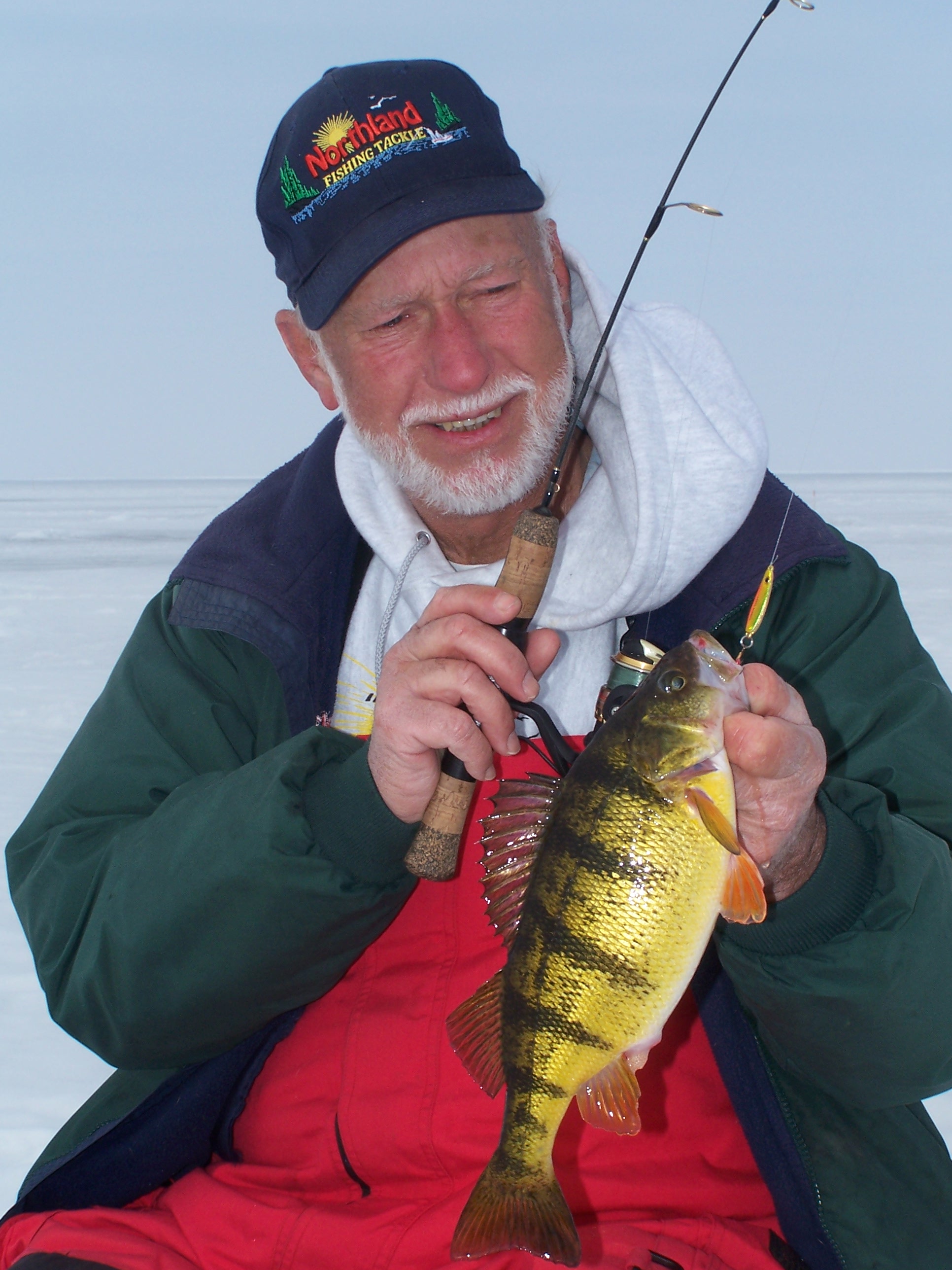by Bob Jensen

Across the ice belt, there are several species of fish that anglers have the opportunity to catch from under the ice. Walleyes, northern pike, perch, crappies, and other types of panfish, smallmouth and largemouth bass, and even catfish can be caught by ice-anglers. The thing is, our presentation needs to change for the different types of fish. Different species of fish respond to different presentations. Walleyes like spoons, panfish like tiny jigs, and pike like natural baits. If you’re targeting a particular species of fish, you need to employ a technique that that species is most likely to respond to.
However, there are some basic principles of fishing that you need to keep in mind regardless of what fish you want to catch. Following are some of those basic principles.
The most important consideration is finding the areas where the fish are most likely to bite your bait. Some community holes will hold lots of fish, but fishing pressure makes those fish very selective. And, after a while, those community holes get fished down. Take some time to search out other areas away from the fishing pressure: Those fish will be more likely to bite your bait, making them easier to catch.
Once you find the fish, you want to keep your bait above them for a couple of reasons. First of all, fish see up better than they see down. If your bait is above them, they’re more likely to see it, which makes them more likely to eat it.
The other reason for keeping your bait above the fish is to possibly prevent spooking the other fish around them. If you see fish on the sonar, drop your bait but stop it when it’s still three or four feet above the fish. Active fish will come up and take the bait. Catch the active ones first. If they quit rising to the bait, then allow it to get closer to them. If you drop it into the group of fish right away and catch a couple, the rest of the school might spook. Make the active ones move away from the school to prevent spooking. I use a Vexilar FLX-28 in the Zoom Mode much of the time. This unit enables me to “zoom” in on a particular zone, so the definition is really good, and I’m able to position my bait exactly where I want it to be.
Another important thing to keep in mind for more ice-fishing success for any species: If they’re not responding to what you’re doing, do something else. If you chase panfish when you’re ice-fishing, you probably know how productive some of the different baits in the Bro’s Bug Collection can be. These are baits that were designed for ice fishing. They’re all very small, and each has its own distinctive quality. The differences may not be that much, but the fish can tell the difference and at times will favor one over the other.
Last thing: As the ice-fishing season proceeds, don’t sit on one hole too long. I know lots of ice-anglers that move constantly. If they’re on a big structure, they’ll put an auger, sonar, and anything else they need into a portable shelter and just keep popping holes until they find the fish. The Otter Pro Cottage is perfect for this plan of attack. It can seat two anglers, but I like plenty of room, so I use this unit even when fishing alone.
Now is when you need to be ice-fishing. If you employ the tactics above, you’ll catch more fish more often when you go ice-fishing.
PHOTO CAPTION—Mr. Walleye Gary Roach with a jumbo perch. Gary is one of the pioneers in the fishing industry who taught us how to catch more fish through the ice.
To see new and old episodes of Fishing the Midwest television, fishing articles, and fishing video tips, visit fishingthemidwest.com

